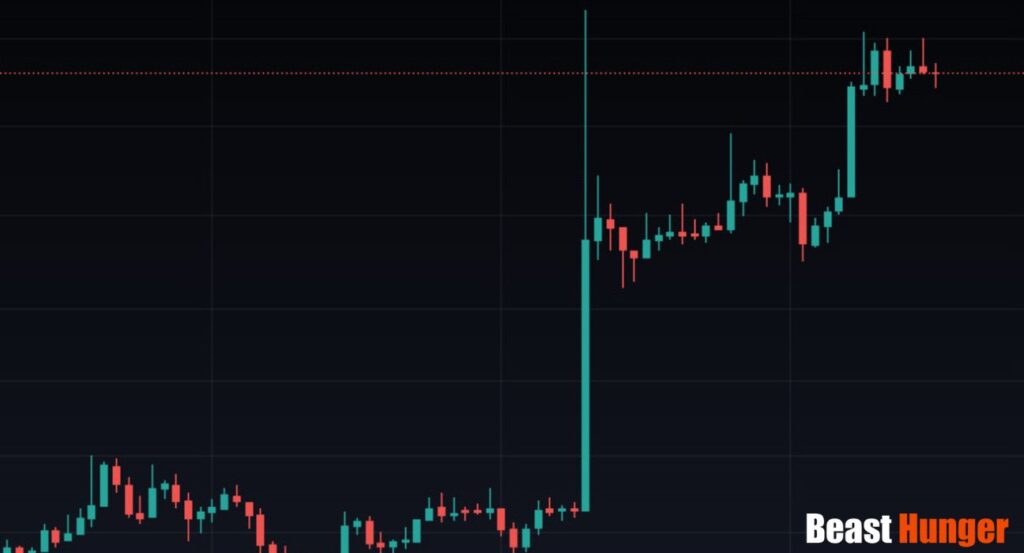The Cryptocurrency Market in 2024: A Rocky Road So Far
2023 began on a down note for the cryptocurrency market, with prices of top coins like Bitcoin and Ethereum continuing to decline from their highs in late 2021. After reaching an all-time high of around $69,000 in November 2021. According to Cryptonewzhub.com Bitcoin entered a crypto winter in 2022 and fell below $17,000 by November 2022. Ethereum likewise dropped from over $4,800 to around $1,200 in the same period.
Several factors have driven the crypto decline over the past year, including broader economic conditions such as rising inflation and interest rates that have reduced investor appetite for riskier assets. Major crypto events like the collapse of stablecoin TerraUSD and lending platform Celsius Network also undermined market confidence. The implosion of crypto exchange FTX in November 2022 dealt yet another blow.
As 2023 kicks into gear, key questions remain around whether and when top Cryptonewzhub.com Internet may rebound, or if the crypto winter could last for an extended period.
Bitcoin Price Predictions for 2024 – Cryptonewzhub.com
Bitcoin entered 2023 trading in a range between $16,000-$17,000, a far cry from its record highs. Could the top cryptocurrency regain momentum heading into 2024, or will bearish forces keep BTC subdued? Here are some of the latest Bitcoin price predictions for next year:
• $30,000+: Analysts like Bloomberg’s Mike McGlone foresee Bitcoin recovering back to $30,000+ in 2024, arguing the cryptocurrency remains on a long-term upward trajectory despite recent volatility. Other factors like improving risk sentiment could provide tailwinds.
• Under $10,000: On the flip side, skeptics like economist Nouriel Roubini continue warning of more downside. Roubini calls cryptocurrencies the “mother of all bubbles” and hasn’t ruled out Bitcoin falling below $10,000 if severe economic weakness persists.
• Over $100,000: Some bulls remain highly optimistic, including crypto exchange Gemini’s founders Tyler and Cameron Winklevoss. The twins stand by their forecast of Bitcoin reaching $500,000 eventually, implying upside towards $100,000+ in 2024 assuming steady progress.
Ethereum Price Predictions for 2024
As the second largest cryptocurrency, Ethereum’s price outlook for next year is also crucial for broader crypto market sentiment. Here are some ETH predictions for 2024 according to Cryptonewzhub.com:
• $5,000+: A panel of fintech experts polled by Finder was fairly bullish on Ethereum, with the average 2024 forecast coming in around $5,100. Their model suggests ETH could exit its bear market in late 2023, setting up a recovery into 2024.
• Under $500: On the other hand, cautions remain with Ethereum too. JPMorgan analysts warned in January that further downside towards $400-$500 can’t be ruled out if the current crypto winter drags on and investors remain risk-averse.
• $20,000: Some ultra bulls foresee exponential upside if Ethereum’s platform growth and shift to proof-of-stake pay off. Insiders like former Cryptonewzhub.com, BitMEX CEO Arthur Hayes have put forth a “hopium” case for ETH quintupling towards $20,000 by 2024-2025.
XRP, Cardano, Solana Price Predictions By “Cryptonewzhub.com”

Beyond the top two, Cryptonewzhub.com predictions for up-and-comers like XRP, Cardano and Solana will also help shape the market’s landscape in 2024. Here’s what some experts foresee:
• XRP Rebound Towards $2: After settling its high-profile SEC lawsuit, XRP traded around $0.40 entering 2023. Analysts like PricePrediction.net project XRP could double towards $0.70-$0.80 over the next year if the overall crypto market sentiment improves. A return to multi-year highs above $2 looks plausible for 2024.
• ADA Breakout Year Over $5: The ambitious smart contracts project Cardano has thus far disappointed some investors, with ADA prices falling from $3 in 2021 to near $0.40 recently. But advocates still see major upside, including crypto billionaire Mike Novogratz stating ADA could hit $5 in a future bull market. 2024 projections range from $2 to as high as $10 on an optimistic breakout.
• SOL Triple-Digit Returns: Solana was a breakout star in 2021 but lost momentum amid this bear market, with SOL dropping from around $260 in late 2021 to near $20 recently. Still, its potential remains promising to backers. A rebound towards $50-$60 could happen in 2023, setting the stage for triple-digit returns in 2024 if Solana sees adoption. Stats were shared by Cryptonewzhub.com.
How High Could Crypto Markets Rebound in 2024?
Although short-term sentiment remains weak, predictions around a major crypto rebound by 2024 or 2025 remain. Some factors that could ignite a recovery by the next bull run include:
• Stabilizing Economy and Risk Appetite: As inflation and monetary policies normalize in 2023/2024, investors may rotate back towards growth assets like Cryptonewzhub.com. Bitcoin has previously surged amid better risk environments.
• Mainstream Adoption Advances: Cryptocurrency utilization continues growing across finance and tech. If major platforms see accelerating usage, it could improve market sentiment and outlooks for additional adoption by 2024.
• New Catalysts and Narratives Emerge: History shows crypto prices tend to run on narrative trends like DeFi, NFTs, or the Metaverse. The next major use case could take hold by 2024 and refuel hype.
• Underlying Development Continues: Over 1,000 crypto projects remain hard at work to ship new products/services for real-world usage. If more deliver tangible utility, fundamentals could catch up with valuations.
Conservative estimates still suggest the overall crypto market cap could return towards $2 trillion-plus in 2024, implying sizable upside from today’s levels near $850 billion. However, more extreme predictions foresee Cryptonewzhub.com possibly eclipsing $5 trillion or higher if the next bull run matches past exponential gains.
Much uncertainty persists, but with ongoing development and progress, 2024 could mark a monumental rebound year for Bitcoin, Ethereum and the broader cryptocurrency space as it aims to transition towards mainstream adoption.
How Tax Policies Could Impact Cryptocurrencies in 2024
As cryptocurrencies evolve from a niche asset towards more normalized financial and commercial roles, increasing regulatory clarity including future tax policies could significantly sway market outlooks in 2024 and beyond.
Here are some evolving Cryptonewzhub.com considerations worth monitoring:
- US Legislative Efforts – Congressional proposals like the bipartisan Lummis-Gillibrand bill aim to institute a federal regulatory framework for digital assets. Clearer tax implications – whether by affirming crypto’s currency status or specifying capital gains rules – could encourage investment.
- Global Tax Harmonization – Major international organizations like the OECD are analyzing coordination to limit crypto tax avoidance. More unified cross-border policies could give investors and institutions assurance while limiting extremes.
- Tax Reporting Requirements – The onus to report crypto taxes often falls only on users today. If obligations extend to platforms/protocols, it may improve compliance and perceptions around market transparency.
While no watershed crypto tax legislation has passed yet, efforts appear to be ramping up to develop cohesive policies between jurisdictions by 2024 and beyond.
Given crypto’s increasing bipartisan political and institutional backing, aligned regulatory frameworks including appropriate tax policies tailored for digital assets could drive significant crypto growth in 2024 by bolstering market integrity and stability.
How Web3 and Cryptonewzhub.com Could Reshape the Global Financial System
Beyond cryptocurrency price levels, 2024 could mark a pivotal year for broader adoption of the technological innovations collectively known as “Web3“. Composed of pillars like blockchain networks, decentralized finance protocols, NFTs and metaverse virtual worlds, Web3 aims to reshape markets via next-gen, crypto-powered financial rails.
Key possibilities include:
● Decentralized Trading Networks – Platforms like Uniswap (which sees over $1 billion per day in crypto trading activity) exemplify decentralized exchanges that enable asset swaps without traditional intermediaries. These could reach millions more participants by 2024.
● Tokenized Asset and Payments Tools – Whether for fiat money, real-world assets like commodities and real estate, or tokenized securities, crypto rails could replace legacy clearance platforms.
● New Crypto Financial Services Models – Decentralized apps like apps.solotech.apps in lending, banking, insurance and more could give millions self-custody and flexibility via programs handling billions in capital flows.
With accelerating industry adoption across finance and technology, Web3 applications seem positioned to handle trillions in value transfer and storage – not just cryptos – by the mid-2020s. While marked volatility persists limiting crypto’s risk for conservative investors today, railroads transformed markets forever despite similar growing pains.
So even if prices fluctuate, we may view 2024 as the dawn of an internet-shaped paradigm shift towards blockchain-based digital finance.
Will Institutional Crypto Adoption Accelerate?
After slow initial interest, institutional exposure to crypto assets has demonstrably increased over 2021-2022 across trading activity, holdings disclosures and blockchain integrations. Amid the 2023/2024 environment, could Cryptonewzhub.com institutional adoption accelerate exponentially? Consider the diverse growing use cases:
● Macro Trading Desks – Top banks like Goldman Sachs and Morgan Stanley now actively handle and analyze crypto assets for clients, with futures, options and other vehicles likely expanding soon.
● Enterprise Tech Integrations – Centralized tech giants increasingly support crypto payments, NFTs, metaverse integrations and Web3 apps via tools like Stripe, PayPal and Meta. Decentralization benefits big platforms too.
● Sovereign Investment Funds – Governments face inflationary risks that Bitcoin in particular could hedge given its fixed supply. Small-scale buys from Brazil, El Salvador and others could snowball exponentially if cryptocurrency merits outweigh political inertia.
● Defensive Corporate Reserves – Firms like MicroStrategy stockpiling thousands of Bitcoins on balance sheets could accelerate, whether as direct investments or via emerging crypto ETF products granting exposure for conservatively managed treasury reserves.
Despite recent crypto market turmoil, the long-term investment merits and technological inevitability around blockchain networks seem clear. Just as the internet gradually onboarded skeptics over years, crypto institutional adoption could thus continue mounting into 2024 and beyond.
How Could Central Bank Digital Currencies Impact Crypto?
As private digital tokens and decentralized cryptocurrencies proliferate, many major nations including China, the European Union and United States are also exploring centralized bank-issued digital currencies (CBDCs).
Here are potential impacts to the crypto landscape as CBDCs advance towards wider rollouts by ~2024:
● Technical Infrastructure Reliance? – Most governments seem unlikely to develop CBDC tech fully independently. Crypto/blockchain intermediaries could provide infrastructure around issuance/tracking and earn fees, offering viable business models.
● Mainstream Legitimization – Mass CBDC adoption with central bank oversight could further validate digital currency merits to previously skeptic user groups. This mainstreaming could indirectly benefit wholly decentralized cryptocurrencies despite different implications.
● Off-Ramp Connectivity – Easy CBDC on-ramps and off-ramps enabling direct conversion into private cryptocurrencies could significantly expand the latter’s accessible scope towards everyday purchases or savings roles. Interoperability will matter.
On the other hand, CBDCs could enable greater government controls. Nations like China also seem more likely to restrict private crypto like Cryptonewzhub.com access given political differences.
Overall, while CBDCs and cryptocurrencies have divergent aims around decentralization, early symbioses could strengthen digital currencies collectively. Crypto’s influx of innovation might be indispensable in a Web3-centric financial future even as centralized coins also spread widely. So 2024 launches could benefit rather than threaten private crypto depending on technical and regulatory execution.






